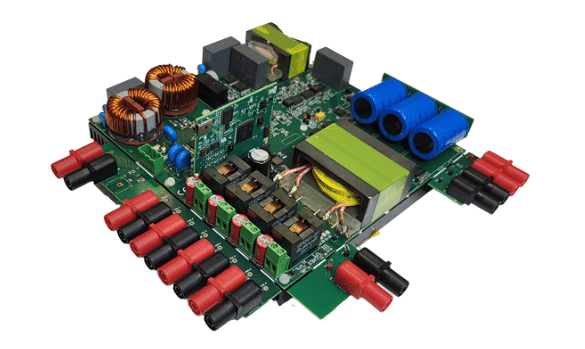It offers significant advantages in power density, switching frequency, and system cost, making it a valuable asset for modern renewable energy applications.

The pressing need for energy sustainability and security is driving the rapid adoption of renewable energy solutions, particularly solar energy and energy storage systems. In residential settings, micro inverters offer an attractive balance between cost, efficiency, and ease of installation for end-users. However, integrating energy storage systems with existing micro inverters poses a challenge due to the absence of bidirectional converters in these devices.
This reference design TIDA-010933 by TI introduces a four-input bidirectional 1.6kW GaN-based micro inverter with integrated energy storage capabilities. The design showcases a 1.6kW single-phase bidirectional micro inverter that leverages GaN technology. It features four identical channels, each supporting up to 60 V and ±14 A on the DC side. These channels are compatible with photovoltaic (PV) panels or 48-V Battery Energy Storage Systems (BESS). On the high-voltage (HV) side, the inverter connects to a single-phase AC grid. Isolation between the low-voltage (LV) and HV sides is achieved through a bidirectional fixed-frequency CLLLC converter. The control algorithm is implemented using a C2000 MCU.
This design has high-power density, which maximizes power output while minimizing the physical footprint. It operates at a high-switching frequency, allowing for the use of smaller passive EMI filter components, thereby improving efficiency and reducing size. The design offers versatile channel operation, with any of the four channels capable of functioning as a PV input or connecting to a 48V battery storage system, providing flexibility in energy management. It utilizes a single-chip controller with a C2000 MCU to manage DC/AC, DC/DC, and Maximum Power Point Tracking (MPPT) functions comprehensively. Effective common mode isolation is achieved through an isolated DC/DC topology, enhancing safety and reliability. Furthermore, the design is a cost-effective system solution, aiming to minimize overall system costs without sacrificing performance.
The totem-pole topology was selected for this micro inverter reference design due to its superior performance and lower cost compared to other DC/AC topologies, despite generating higher common mode noise than alternatives like H-bridge, bipolar, or Highly Efficient and Reliable Inverter Concept (HERIC). This reference design is ideal for applications such as micro inverters in residential solar power systems, providing efficient and flexible energy conversion and storage, and power conversion systems (PCS) that enhance the efficiency and reliability of renewable energy applications. Overall, it offers a versatile and efficient energy solution for residential solar systems, combining a high-performance micro inverter with energy storage capabilities, supported by a four-input bidirectional 1.6kW GaN-based architecture.
Texas Instruments (TI)has tested this reference design. It comes with a bill of materials (BOM), schematics, assembly drawing, printed circuit board (PCB) layout, and more. The company’s website has additional data about the reference design. To read more about this reference design, click here.






